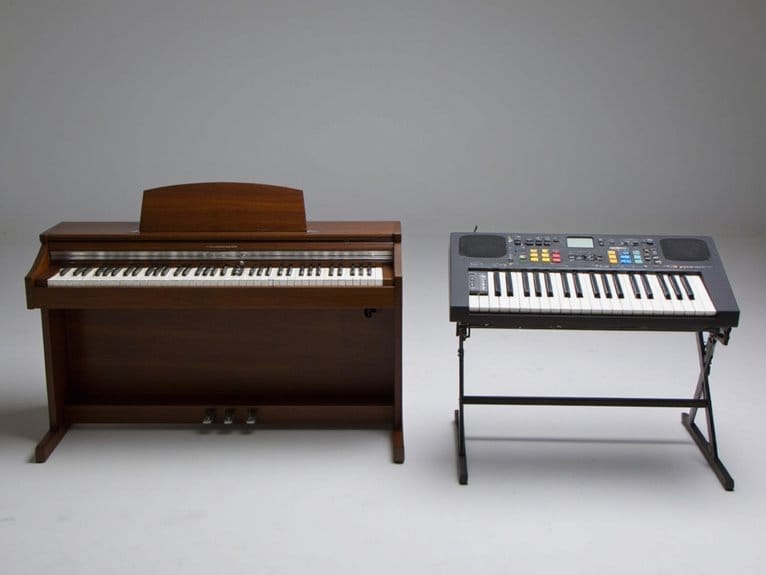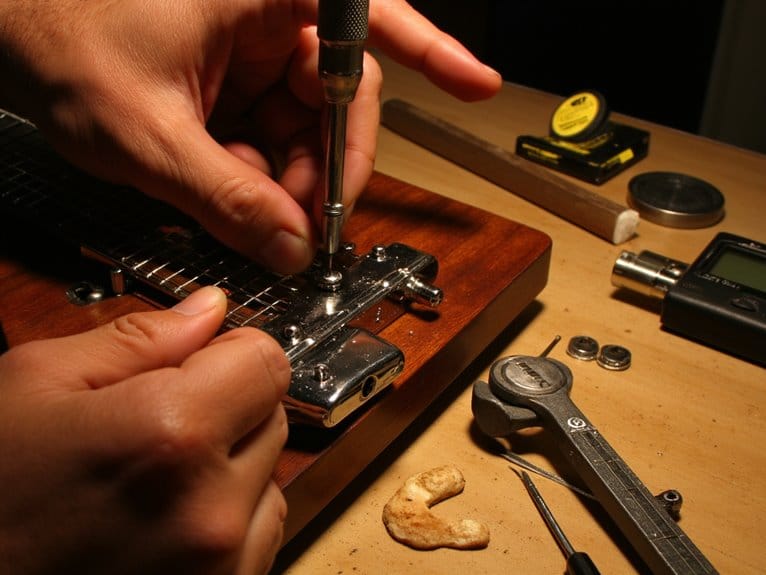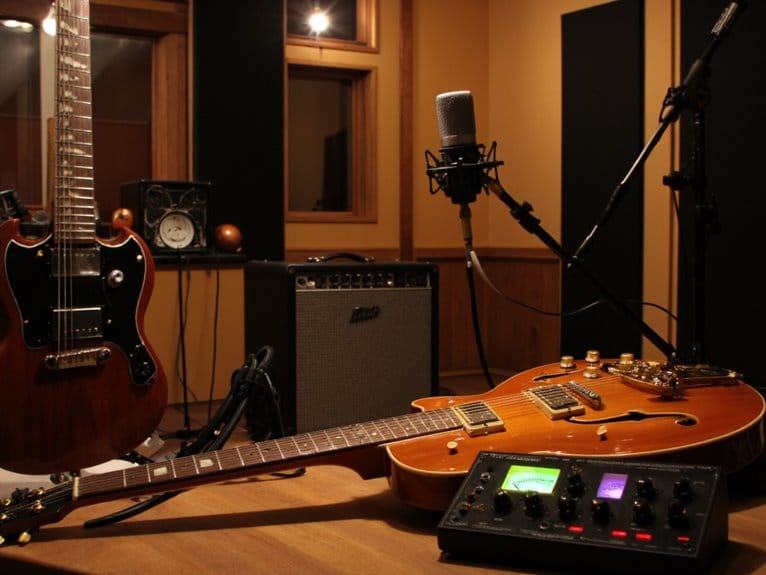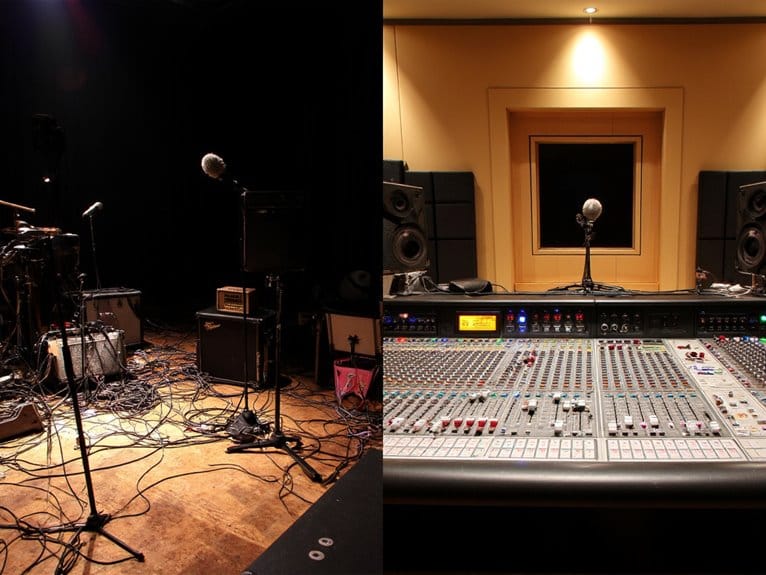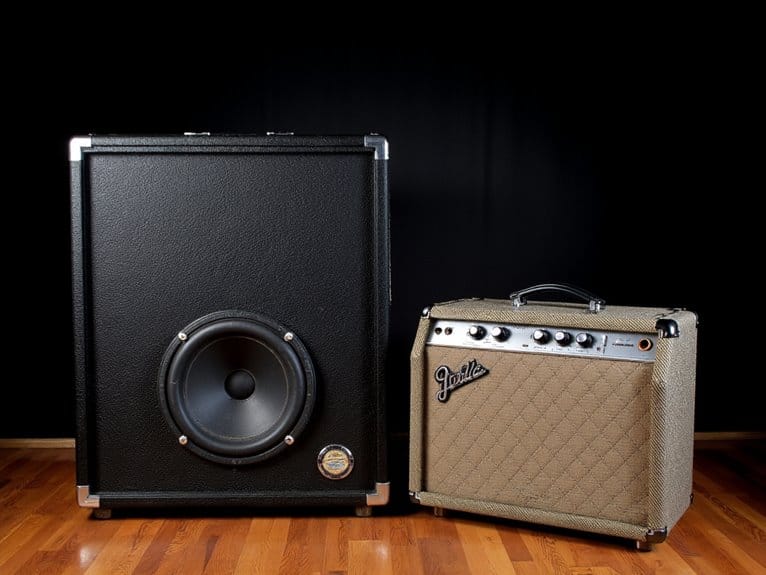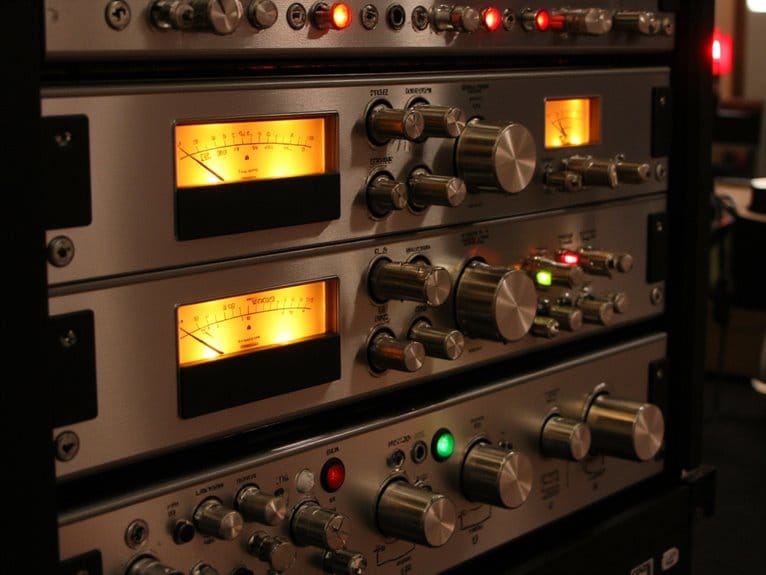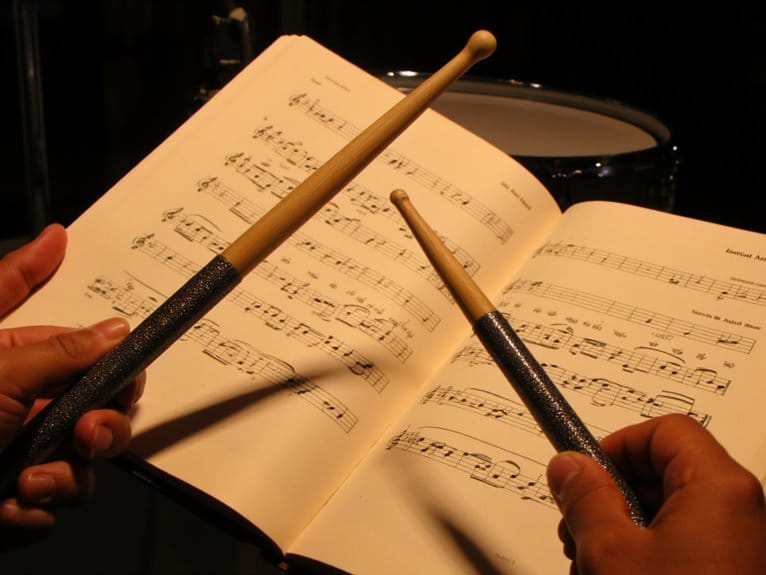Digital Piano Vs Keyboard: What’s the Difference
You’ll find that digital pianos feature 88 weighted keys with hammer action, premium materials, and wooden cabinetry designed to replicate acoustic piano experience, while keyboards typically offer 25-76 unweighted keys in lightweight plastic construction prioritizing portability and versatility. Digital pianos excel at authentic piano sound through sophisticated sampling and cost more, whereas keyboards provide hundreds of voices, built-in rhythms, and budget-friendly experimentation. Understanding these core distinctions will help guide your decision toward the instrument that best matches your musical goals.
We are supported by our audience. When you purchase through links on our site, we may earn an affiliate commission, at no extra cost for you. Learn more.
Notable Insights
- Digital pianos have 88 weighted keys with hammer action, while keyboards typically have 25-76 unweighted keys.
- Digital pianos weigh over 100 pounds with wooden cabinetry, whereas keyboards are portable at around 20 pounds.
- Digital pianos focus on authentic piano sound through advanced sampling, while keyboards emphasize variety with 100+ voices.
- Digital pianos use premium materials like synthetic ivory, while keyboards feature plastic construction and smaller keys.
- Digital pianos target serious practice with higher price points, while keyboards are budget-friendly for experimentation.
Key Count, Size, and Physical Construction
One of the first things I notice when comparing digital pianos to keyboards is the stark difference in key count, which immediately tells you what each instrument is designed for. Digital pianos consistently feature 88 keys, matching acoustic pianos exactly, while keyboards come in various configurations—25, 37, 49, 61, 73, or 76 keys depending on your needs.
The physical construction differences are equally telling. Digital pianos use premium key materials like synthetic ivory and ebony, with full-sized key shape that mirrors acoustic piano dimensions perfectly.
Keyboards typically use basic plastic construction with potentially smaller keys. You’ll find digital pianos housed in wooden cabinetry measuring roughly 54 inches long, while compact keyboards might only stretch 36 inches, prioritizing portability over traditional piano aesthetics. Digital pianos incorporate weighted keys that mimic the resistance feel of acoustic piano hammers striking strings. Many keyboards feature touch-sensitive keys that respond to playing pressure, allowing for dynamic expression in your performance.
Weight, Action, and Touch Response
When you press down on a key, the fundamental difference between digital pianos and keyboards becomes immediately apparent through the resistance and feedback you feel under your fingers.
The moment your fingers touch the keys, you’ll instantly feel whether you’re playing a digital piano or keyboard through the distinct resistance and response.
Digital pianos feature weighted keys that simulate an acoustic piano’s hammer action, requiring more force and providing considerable tactile feedback that enhances your dynamic control over volume and tone.
Meanwhile, keyboards typically use unweighted, spring-action keys that respond quickly with minimal resistance, making them ideal for rapid playing but limiting your touch sensitivity options.
The action types vary greatly—digital pianos often incorporate graded hammer action where bass keys feel heavier than treble keys, while keyboards prioritize portability over realistic piano feel, resulting in instruments weighing around 20 pounds versus digital pianos that can exceed 100 pounds.
Some keyboards lack velocity sensitivity entirely, meaning they produce uniform volume regardless of how hard or soft you press the keys, which significantly impacts your ability to create expressive musical dynamics.
Sound Quality and Audio Technology
While the physical differences between digital pianos and keyboards are immediately noticeable, the sonic distinctions reveal where these instruments truly diverge in their design philosophies and intended purposes.
Digital pianos excel in sound authenticity through sophisticated sampling techniques, capturing every nuance from world-class instruments like Yamaha CFX and Bösendorfer Imperial grands. Their multi-layer sampling technology, combined with Virtual Resonance Modeling, creates remarkably realistic piano tones that respond dynamically to your touch.
Here’s how these instruments differ in audio technology:
- Sound Focus: Digital pianos prioritize piano perfection; keyboards emphasize variety
- Sampling Depth: Digital pianos use memory-intensive, high-fidelity samples; keyboards spread resources across multiple sounds
- Dynamic Range: Digital pianos offer nuanced pianissimo to fortissimo expression; keyboards provide limited dynamics
- Audio Processing: Digital pianos simulate acoustic behavior; keyboards focus on synthetic versatility
Portability and Design Considerations
Beyond the sonic capabilities that separate these instruments, the physical reality of living with a digital piano or keyboard brings entirely different considerations into play, and honestly, this is where many buyers discover their theoretical preferences clash with practical limitations.
You’ll find that keyboards excel in transport options, weighing markedly less than digital pianos while offering maximum mobility for apartment dwellers or gigging musicians. Digital pianos, particularly console-style models, prioritize aesthetic preferences with furniture-like designs that complement your living space but sacrifice portability.
I’ve noticed that weighted keys in digital pianos add considerable bulk, while keyboards maintain streamlined profiles through lighter action mechanisms. Your choice ultimately depends on whether you value authentic piano aesthetics or prioritize frequent movement and compact storage solutions.
Features, Functionality, and Price Points
As someone who’s spent countless hours comparing feature sets and price tags, I can tell you that the functional differences between digital pianos and keyboards create dramatically different value propositions that’ll either perfectly match your needs or leave you questioning your priorities.
The playability experience varies dramatically between these instruments, with digital pianos offering weighted keys and authentic sound engines that simulate acoustic piano nuances, while keyboards provide lighter action but incredible versatility uses through their expansive sound libraries.
Here’s what you’ll typically find:
- Digital pianos: 88 weighted keys, advanced sampling technology, focused piano sounds
- Keyboards: 61-76 keys, 100+ voices, built-in rhythms and lessons
- Price ranges: Digital pianos start higher, keyboards offer budget-friendly entry points
- Target users: Pianos for serious practice, keyboards for experimentation and diverse genres
Digital pianos typically span 53.5 to 58.5 inches in width, requiring careful consideration of your available space before purchasing, as models like the STRICH SDP-120 and Yamaha P143B demonstrate the importance of space requirements in home environments.
Advanced polyphony ranges from 192-256 notes ensure that digital pianos can handle complex performances without dropping sounds during intricate playing sessions.
Many digital pianos include lesson modes and split keyboard functionalities that enhance the learning experience through teacher-student collaboration.
Frequently Asked Questions
Can I Connect Headphones to Both Digital Pianos and Keyboards?
You can connect headphones to both digital pianos and keyboards since they typically feature headphone jacks with excellent headphone compatibility. This provides superior sound quality and lets you practice privately without disturbing others around you.
Which Instrument Is Better for Learning Classical Piano Pieces?
You’ll find digital pianos superior for classical repertoire due to their weighted keys and authentic sound. The learning curve becomes smoother since they replicate acoustic piano touch, preparing you for advanced classical pieces requiring proper technique.
On a final note
You’ll find that choosing between a digital piano and keyboard ultimately depends on your specific needs, budget, and musical goals. If you’re prioritizing authentic piano feel with weighted keys and superior sound quality, you’ll want a digital piano, though you’ll pay more and sacrifice portability. For versatility, affordability, and convenience, keyboards offer excellent value with their lighter weight, diverse sounds, and additional features that make them ideal for beginners and performers alike.

